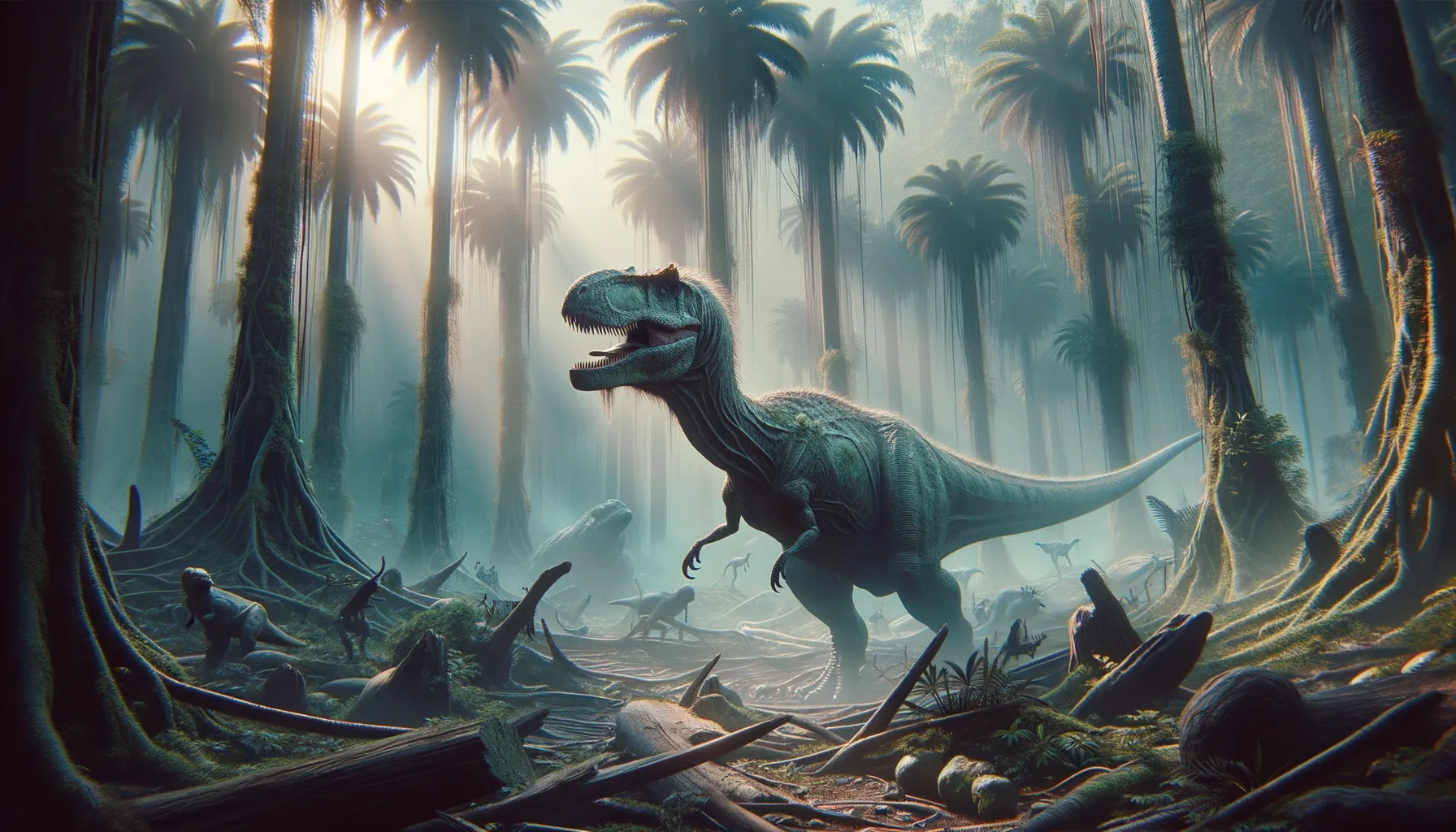
Clarencea
Uncovering Earth's ancient giants.
Period
Unknown
Length
No data available for length.
Height
No data available for height.
Weight
No data available for weight.
Clarencea is a fictional dinosaur name, so details about it do not exist in paleontological records. Dinosaurs, in general, have captivated our imagination for centuries, symbolizing an era of massive creatures that once roamed Earth. Paleontology allows us to piece together their existence, habits, and evolution based on fossil evidence unearthed in various locations.
Diet
No information is available on the diet of Clarencea as it is not a real dinosaur. In general, dinosaur diets varied widely depending on their type, ranging from plant-eating herbivores to meat-eating carnivores.
Hunting
Clarencea's hunting behavior cannot be described as it is not a recognized dinosaur. For real theropods, hunting techniques could range from ambush strategies to pack hunts, depending on the species and available prey.
Environmental challenges
In reality, dinosaurs faced a range of environmental challenges, including drastic climate changes, natural disasters, and competition for resources. Understanding these challenges helps scientists learn the factors contributing to their extinction. While Clarencea is fictional, studying real dinosaurs' adaptability provides insights into survival traits during various geological periods.
Speed
No data available for speed.
Lifespan
No data available for lifespan.
First discovery
Clarencea is a fictional dinosaur name.
Fun Facts
- Clarencea lived approximately 150 million years ago during the late Jurassic period.
- This dinosaur had a unique feature; it sported feather-like structures, hinting at its evolutionary link to birds.
- Clarencea was a theropod, meaning it walked on two legs, similar to a T-Rex, but was much smaller in size.
- Fossils of Clarencea have been primarily discovered in what is now North America.
- It is believed that Clarencea was an omnivore, dining on both plants and small animals.
- Despite its small size, Clarencea had sharp teeth and claws, suggesting it was a skilled hunter.
- Scientists are particularly interested in Clarencea because it provides insight into the dinosaur-to-bird transition.
Growth and Development
For many dinosaurs, growth and development were rapid phases influenced by environmental factors and resource availability. While Clarencea does not exist, studying the fossilized remains of juvenile to adult dinosaurs helps reconstruct their life stages and developmental changes.
Habitat
Since Clarencea is fictional, we do not have information on its habitat. However, dinosaurs lived in diverse habitats such as lush jungles, arid deserts, and wet marshes. These habitats provided the necessary resources for sustenance and influenced their lifestyle and adaptations.
Interaction with other species
As a fictional dinosaur, Clarencea's interactions with other species cannot be detailed. Real dinosaurs interacted in ecosystems where predator-prey dynamics, competition for food, and symbiotic relationships shaped evolutionary pathways.
Natural lifespan
Clarencea does not exist, so its lifespan is unknown.
Reproduction
Clarencea's reproduction cannot be outlined as it is fictional. Fossil evidence has shown that many dinosaurs laid eggs and some species may have shown parental care to ensure the survival of their young.
Social behaviour
We cannot specify the social behavior of Clarencea, as it is not a real dinosaur. In contrast, some real dinosaurs like theropods may have exhibited complex social behavior, including pack hunting and nesting in colonies.
Fossil locations
Clarencea fossils do not exist, as it is fictional. However, real dinosaur fossils have been discovered in numerous continents, each providing unique insights into the variety of dinosaurs that existed in different regions across prehistoric Earth.
